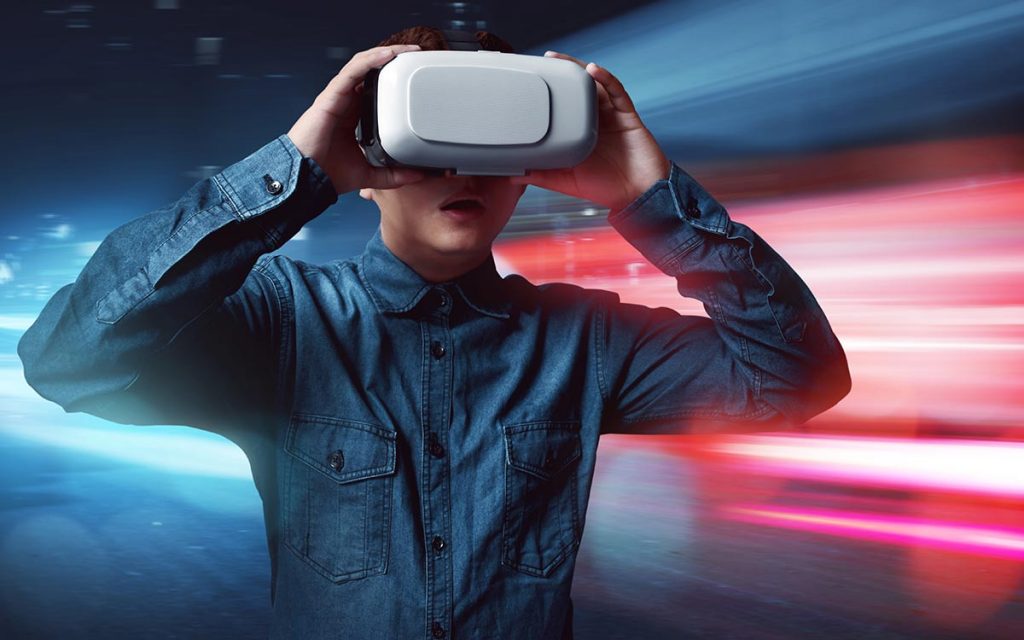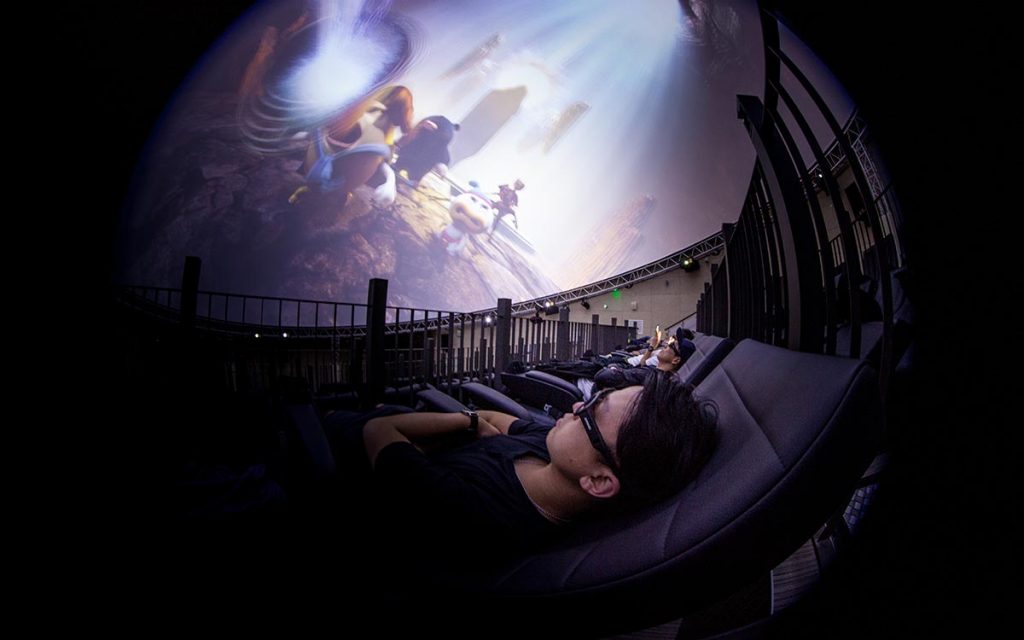If cinematography didn’t change with new technology it wouldn’t be as inspiring as it is today. Filmmakers know that innovation is the only way to stay relevant, but it’s always a surprise when something new bursts onto the scene.
Nowadays, the use of immersive technology in films is increasingly popular and has ushered in a new way of watching movies. It is a gateway for moviegoers into the world inhabited by the characters of movies.
One of the most representative technologies used in cinema is virtual reality (VR). Film executives and progressive thinkers are learning to how make VR a part of the film experience. With VR cinema, watching movies is as much a social experience as it is an individual one. At the Tribeca Film Festival this year, a VR movie called Cave allowed up to 16 people to explore a movie in a social virtual space.
Another thing that VR has brought to the arena is the concept of gamification. Here VR is closely associated with another trend – e-sports. This refers to theatres hosting events where guests can play popular video games in a multi-player format. Very popular in the Asian markets, it is now beginning to penetrate the U.S. and Europe as well.
VR technology also has the ability to make movie plots and characters more relatable. In VR film you are not just passively watching the protagonists and judging their thoughts and actions from in front of a screen, you are also standing beside them, participating and seeing their fictional world in a new way.

Are VR films the future of cinema?
The VR experience provides the same sort of benefit as seating or an expanded food and beverage menu. It is giving moviegoers a reason to unplug their home-entertainment device and go to the cinema.
Big-name directors have recognised the potential of the VR movies. Oscar winner Kathryn Bigelow created a VR documentary called The Protectors in 2017, Alejandro G. Inarritu won an Oscar for his VR installation Carne y Arena, and Ridley Scott and Robert Rodriguez are also heading up VR projects. Even Steven Spielberg was one of many investors who backed Dreamscape Immersive, a free-roam, shared-experience VR theatre. According to them, it seems that VR will represent an important part of filmography in the future.
Hemispherical screen cinemas: a full-dome movie experience
Dome theatres have evoked a powerful sense of wonder in viewers for decades. These immersive hemispheres transform the whole theatre into a virtual environment in a way no other media ever could. Contemporary immersive theatres began with planetarium models, which then led to huge dome theatres.
Digital dome theatre is visually compelling and has unique interactive, multi-format, and multi-use capabilities. Advances in digital image, computer graphics, and video technologies are enabling immersive theatres of a new level, based on video projection.
Full-dome theatres offer an immersive experience that can breathe new life into existing facilities or provide an additional dimension to new ones. They are revealing new possibilities and touching the deeper realms of human imagination.

Standard movie theatres cover about 5% of our visual field, while a 360 dome theatre covers 25%. Larger field-of-view images increase the subjective feelings of expanse, natural responses, depth, and powerfulness. Domes present images that are rendered to a view sphere. The result is that domes reproduce a more natural-looking image with an unlimited number of vanishing points in all directions.
Dome theatres offer a strongly immersive experience as either a stand-alone theatre or a simulation ride. These virtual hemispheres stimulate all five senses and change the viewer’s perspective, transforming them from a passive observer to one who is fully drawn into the action.
What can we expect in the future?
Immersive technologies are being embraced not only in the filmmaking industry, but also in engineering, education, medicine, car manufacturing, retail and many other fields.
Innovative new experiments are revealing future possibilities. They are predicting the interaction of the audience with real-time simulations of artificial life forms or ecosystems, immersive video simulcasting of live events or remote locations and networked video games between theatres. We will soon be completely virtually immersed in the exploration of the deepest parts of the ocean and the farthest corners of the universe. One thing is for sure: immersive technologies are going to play a significant role in all human activities from now on.

